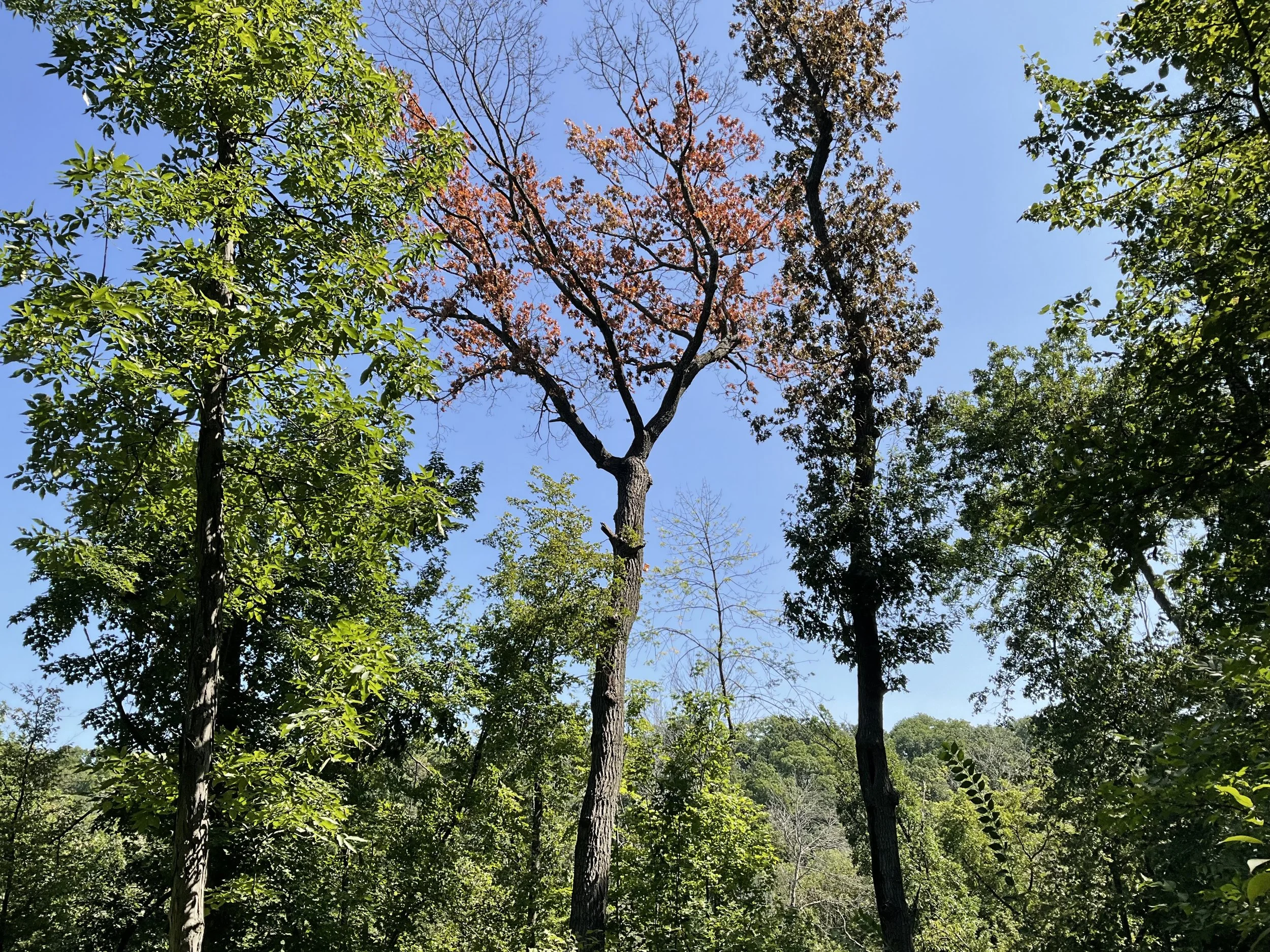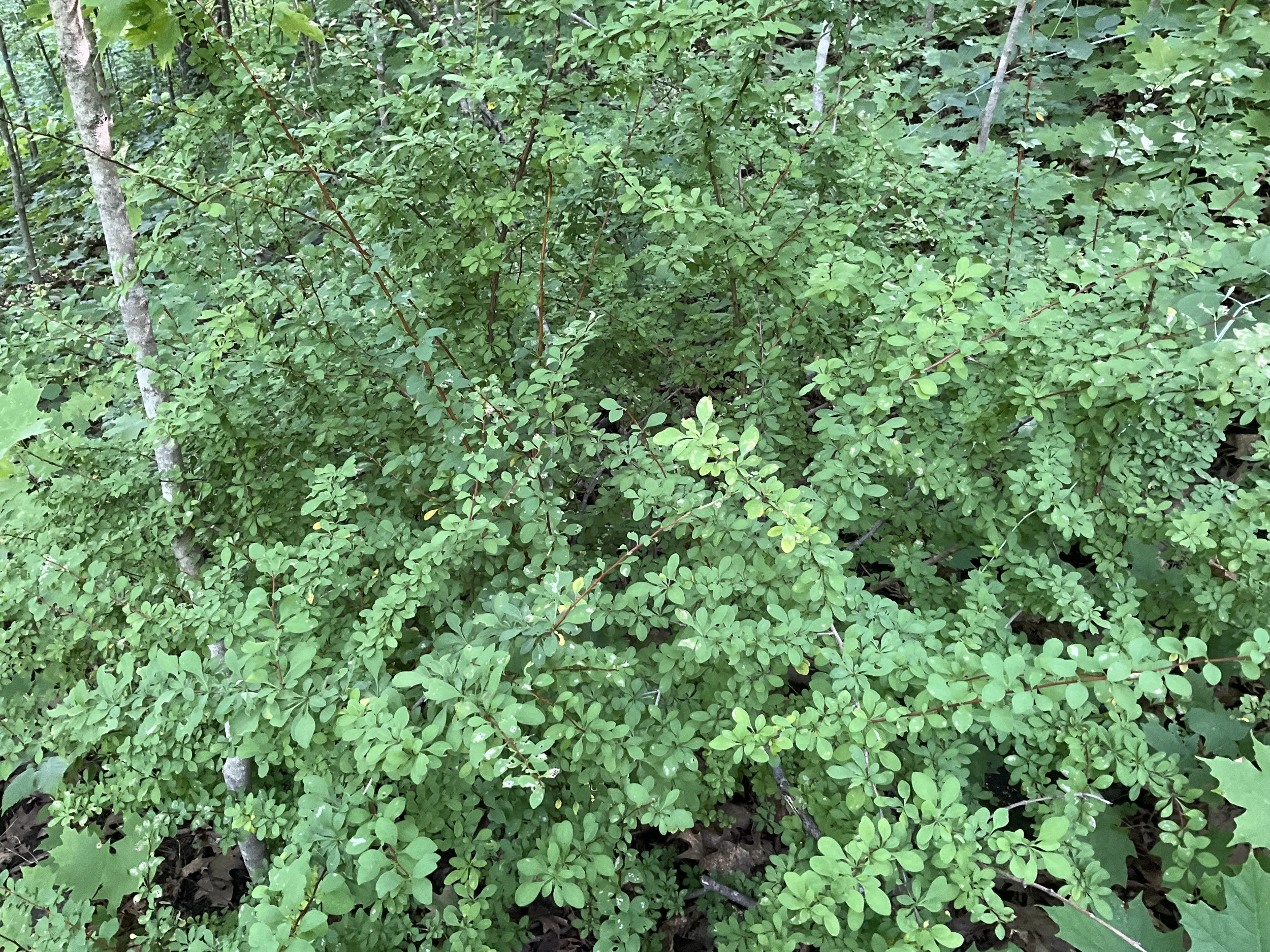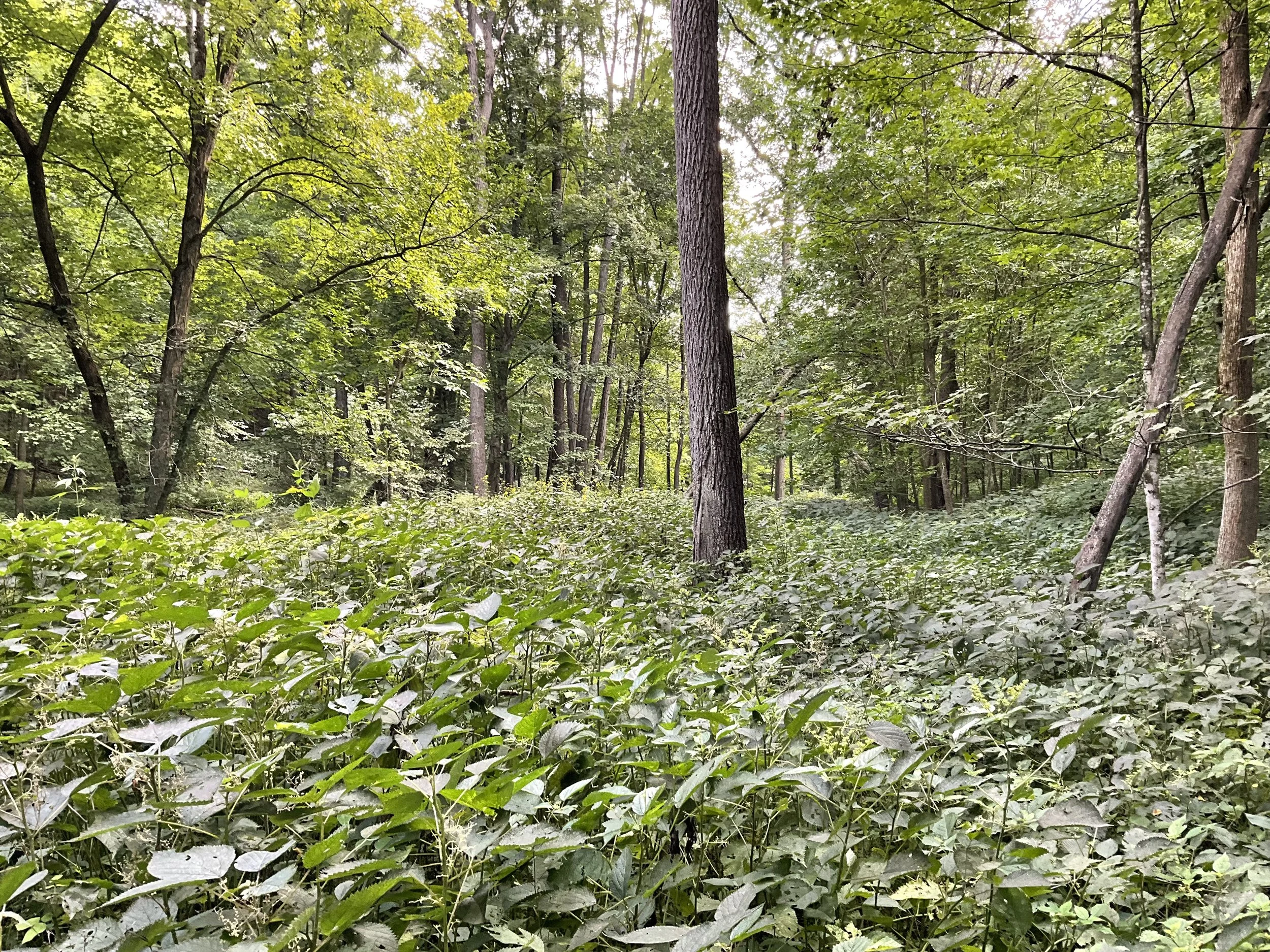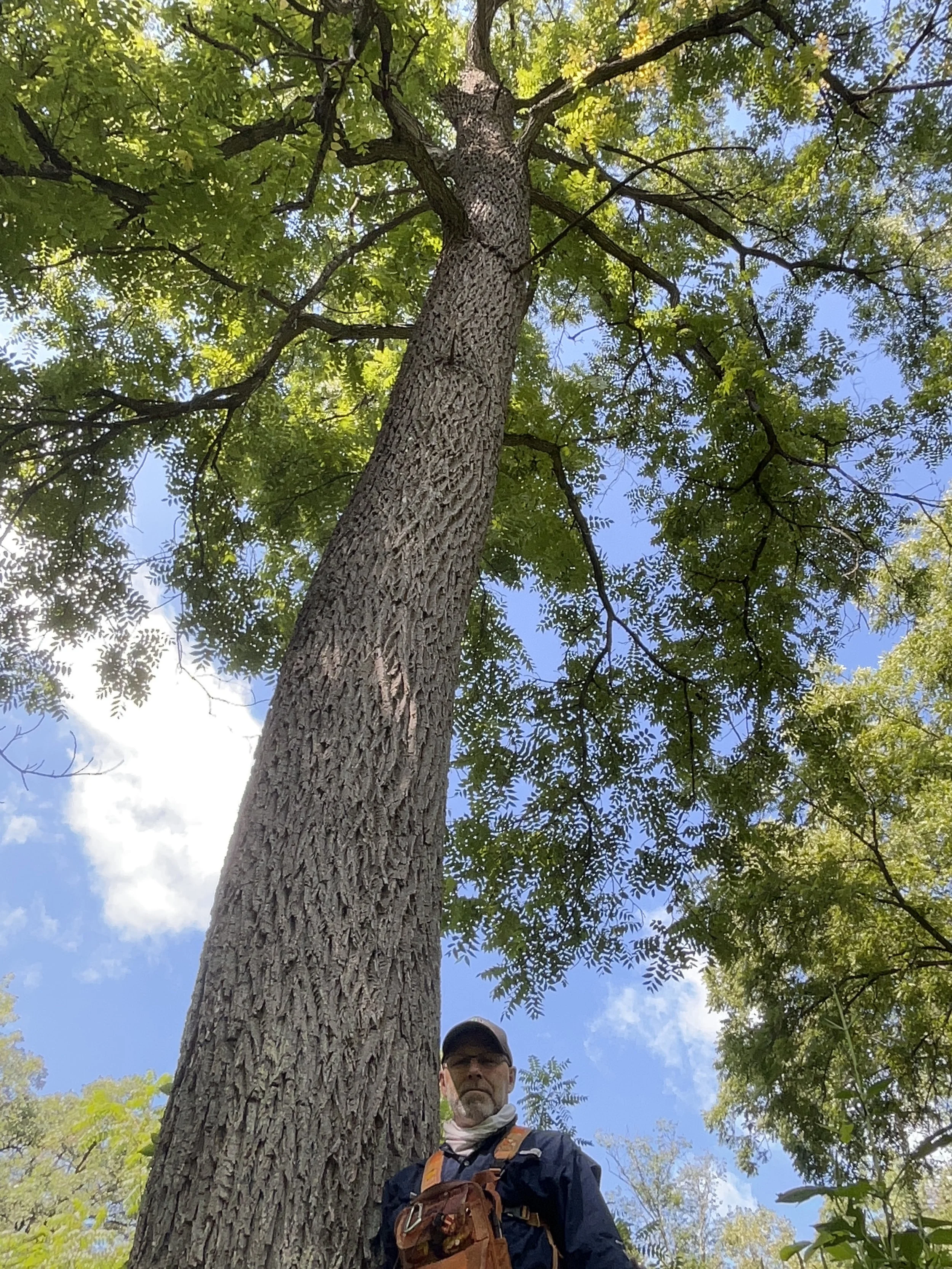Summer Work 2023
It’s important to know how old your trees are! An increment borer can help with that.
A lot of management decisions are based on the age of your trees and how fast/slow your trees may be growing (tight rings-slow growing…..wide rings-fast growing). Counting rings can be challenging!
This spruce stand was too small to feasibly commercially thin (not enough volume-poor markets for the product), an alternative is to complete a non-commercial crop tree release…..girdling the unwanted trees (allowing them to die standing), allowing more room for the desirable (crop) trees to grow freely.
Girdling most trees with two “frills” is effective. Conifers are a bit easier to girdle than hardwoods. Some persistent trees like locust may require herbicide application in the “frill”. Basal bark herbicide application is another option for some situations.
Here is one of those girdled spruce trees. Notice how the growth rings had slowed (gotten smaller) considerably before we girdled it and killed the trees. This shows us the “stand of trees" was in need of a thinning (growth was slowing).
Crop tree release/timber stand improvement in hardwood stands can involve cutting trees to the ground and/or girdling the trees. Often times a combination of both (cutting small trees down and girdling larger undesirable trees).
August is when oak wilt shows up. Red oak and black oak turn from “green to brown” almost overnight. Seeing a red oak or black oak look like this in August is often times oak wilt.
After red oak/black oak become infected (as this tree), the opportunity for spread to nearby trees by root graft is high. There are options to mitigate the spread.
Unfortunately, I saw a lot of invasive woody brush this summer (this is barberry). Invasive woody brush is probably the greatest threat to the sustainability of most landowners’ forests. The most common invasive woody brush I see is honeysuckle, buckthorn, autumn olive, barberry and multiflora rose. Make sure you know if you have any invasive woody brush. If you do, developing a mitigation strategy is beneficial.
Emerald ash borer (EAB) is quickly eliminating ash trees from our landscape. Note the dead trees in the background and the dying trees in the foreground (bark starting to fall off—woodpeckers moving in). In a woodland setting there is not any economically feasible way to stop or slow this from occurring.
SW Wisconsin is “home” to some of the best walnut in the world! I feel fortunate to work with this resource.
Private forest lands are “home” to spectacular walnut trees. Due to its high value, walnut is often not correctly managed. Make sure you have some form of forest stewardship plan in place to aid in this management.
I never get tired of seeing big, tall, beautiful walnut trees!!
Often times in the creek bottoms you will find dense woods nettles on the forest floor under large scattered walnut trees.
Trees this size are usually just under 100 years old! They are capable of growing to over 200 years of age! The discussion of economic maturity versus biological maturity and how that relates to sustainable forest management is always a fun discussion worth having!!
Young walnut stands have their own special beauty….” midwestern palm trees”!!
The driftless region of Wisconsin is well known for its world class trout streams. Most of these trout streams have their origin/’headwaters’ that start on private forest landowners’ property. Healthy, sustainable forests are key components to the health of these ecosystems.
Seeps, springs, small intermittent streams abound across the driftless.
These areas provide value for wildlife, aesthetics and water quality.
If completing forest management practices, make sure to consider your water resources before proceeding. Crossing creeks with machinery and operating machinery within the riparian corridor are situations where it is wise to consult with a resource professional prior. There are specific laws that pertain to these areas.
Determining navigability of a water resource plays a big role in how you can proceed.




















